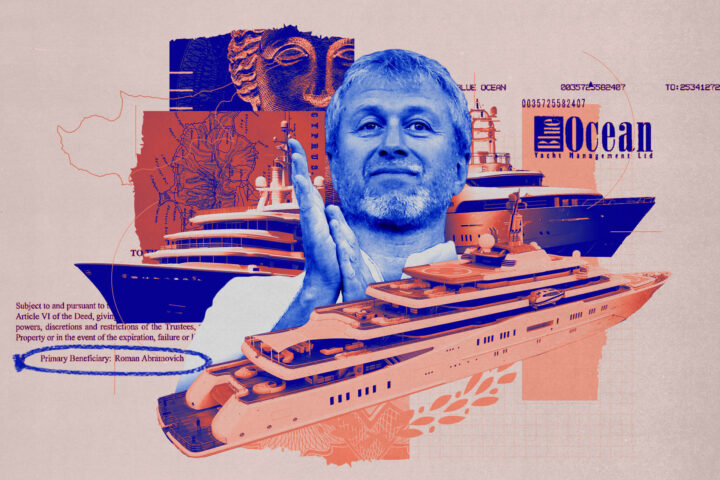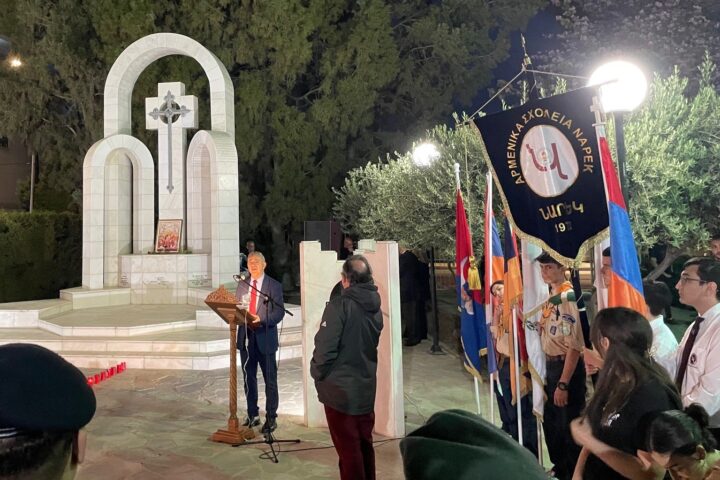Archbishop of the Church of Cyprus Chrysostomos II has stated that the monastery of Apostolos Andreas will be restored according to a study prepared by the University of Patra, and “nobody can intervene to that (study)”.
Speaking here Thursday, and invited to comment on the signing of the agreement between UNDP and the Church of Cyprus for the restoration of the historic monastery in the Turkish occupied Karpas Peninsula, Archbishop Chrysostomos pointed out that since UNDP undertook the responsibility to call on for tenders, the study prepared by the University of Patra will be implemented. There can be no interference by the Turks to that”, he added.
The United Nations Development Programme, officially announced the agreement on the restoration of the monastery of Apostle Andreas, on Thursday.
According to the press release, the two protocols were signed Thursday morning between UNDP-PFF and respectively the Church of Cyprus and the Turkish Cypriot EVKAF Administration.
“The new partnership agreement is an important milestone in the collaboration between the Greek Cypriots and Turkish Cypriots for the preservation of their cultural heritage”, UNDP pointed out.
Cyprus has been divided since 1974 when Turkey invaded and occupied its northern third. The latest round of UN-backed talks began in 2008 with the aim to reunite the island under a federal roof.
Following the agreement to resume talks, the representatives of the leaders of the island’s two communities agreed to set up a number of working groups and technical committees on various issues of concern.
Apostolos Andreas Monastery needs urgent support and restoration because the keystone to the monastery’s main arch has shifted, endangering the main part of the structure. Recent press reports suggest that the Turkish Cypriot regime has begun restoration work at the monastery.
Since the 1974 Turkish invasion of Cyprus, hundreds of valuable artifacts have been stolen from the northern Turkish occupied areas of the island and found their way into the black market overseas.
More than 500 churches have been pillaged, destroyed or turned into museum, inns or silos. Many archaeological sites and other places belonging to the country’s 9,000 year old cultural heritage have been abandoned to the elements.
The Church of Cyprus has, at different times, managed to secure the return of stolen religious artifacts, illegally stolen and sold on the black market abroad.
Apostolos Andreas Monastery – History
Apostolos Andreas Monastery is a monastery situated just south of Cape Apostolos Andreas, which is the north-eastern most point of the island of Cyprus, in Rizokarpaso in the Karpass Peninsula. The monastery is dedicated to Saint Andrew. The monastery is an important site to the Cypriot Orthodox Church. It was once known as 'the Lourdes of Cyprus', served not by an organized community of monks but by a changing group of volunteer priests and laymen. Both Greek Cypriot and Turkish Cypriot communities consider the monastery a holy place. As such it is visited by many people for votive prayers. The contents of the monastery are also noteworthy.
The monastery was supposedly founded here, as during a journey to the Holy Land, the ship which was transporting Saint Andrew went off course and struck the rocks here. On coming ashore, Andrew struck the rocks with his staff, at which point a spring gushed forth. The waters proved to have healing powers, and restored the sight of the ship's captain who had been blind in one eye. Thereafter, the site became a place of pilgrimage. A fortified monastery stood here in the 12th century, from which Isaac Comnenus negotiated his surrender to Richard the Lionheart. In the 15th century, a small chapel was built close to the shore. The church of the main monastery dates to the 18th century, while the main buildings are 100 years younger. [1]
Mass pilgrimage, however, is only comparatively recent, dating back to the 20th century. The story is told that in 1895, the son of Maria Georgiou was kidnapped. Seventeen years later, Saint Andrew appeared to her in a dream, telling her to pray for her son's return at the monastery. Living in Anatolia, she embarked on the crossing to Cyprus on a very crowded boat. Telling her story during the journey, one of the passengers, a young Dervish priest became more and more interested. Asking if her son had any distinguishing marks, and on hearing of a pair of birthmarks, he stripped off his cloths to reveal the same marks, and mother and son were reunited.
After 1974, most of the Greek Cypriots in the area moved to the south, although a few remained in Rizokarpaso. For 30 years, very few pilgrims visited the monastery, but with the opening of the crossing points, this flow is now increasing. The monastery has fallen into a state of disrepair in recent years, UN funding is in place to pay for refurbishment, along with the Hala Sultan Tekke near Larnaca.
Source: Wikipedia







